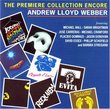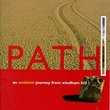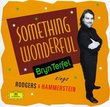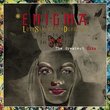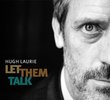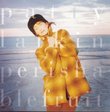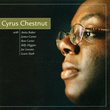| All Artists: Magnus Lindberg, Esa-Pekka Salonen, Philharmonia Orchestra of London, Anssi Karttunen Title: The Music of Magnus Lindberg Members Wishing: 0 Total Copies: 0 Label: Sony Classical Release Date: 6/4/2002 Genre: Classical Styles: Forms & Genres, Concertos, Symphonies Number of Discs: 1 SwapaCD Credits: 1 UPC: 696998981027 |
Search - Magnus Lindberg, Esa-Pekka Salonen, Philharmonia Orchestra of London :: The Music of Magnus Lindberg
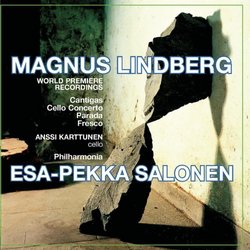 | Magnus Lindberg, Esa-Pekka Salonen, Philharmonia Orchestra of London The Music of Magnus Lindberg Genre: Classical
Four premier recordings add up to a generous dose of Magnus Lindberg's orchestral mastery, served up in lovingly prepared, magnificently engineered performances by the composer's friend and longtime champion Esa-Pekka Salo... more » |
Larger Image |
CD DetailsSynopsis
Amazon.com Four premier recordings add up to a generous dose of Magnus Lindberg's orchestral mastery, served up in lovingly prepared, magnificently engineered performances by the composer's friend and longtime champion Esa-Pekka Salonen. Within just a few minutes into Cantigas, you're swept up by swirling pools of color chords, ticklish brass flurries both muted and open, and chattering, petulant rhythmic figures that bounce off a pliable canvas of dense sonorities. Imagine Respighi's Pines of Rome Swiss-cheesed through a kaleidoscope, and you'll get the idea. Parada reveals a more austere side of Lindberg's protean talents, while the more sparely scored Cello Concerto showcases Anssi Karttunen's virtuosity. He deftly tosses off Lindberg's zigzagging melodic lines (which the orchestral members quickly answer or comment upon) and sails through a cadenza jam-packed with twitchy pizzicato pellets, buzz saw low notes, and suspenseful silences. Lastly, Fresco is a mega-study about loud and soft, laid out in huge sound blocks that effortlessly glide from gentle to aggressive. Booklet notes include clear, insightful, and informative composer comments. --Jed Distler Similarly Requested CDs
|
CD ReviewsStunners from Lindberg et al. Marcus K. Maroney | 10/18/2004 (5 out of 5 stars) "Sony Classical's recent release highlights three talented Finns: composer Magnus Lindberg, conductor Esa-Pekka Salonen, and cellist Anssi Kartunnen. The disc confirms Lindberg's place among those few composers who successfully combine innovation and communication, drawing the audience in to new sounds and techniques that other composers just aren't able to combine in as immediately attractive a way. Production on the disc is excellent. The liner notes feature an informative, somewhat technical interview with the composer that touches upon important structural aspects of each work. Martin Anderson nails Lindberg's style when he writes: "...this surface busy-ness and longer-term harmonic evolution seem to exist as two parallel worlds - almost as if you have to look underneath the exterior of the music to see what's really going on." The fact that Lindberg creates such a gorgeous exterior out of such rigorous and intellectual planning is stunning. Sound quality is demonstration-worthy, the loudest, most complex counterpoint springing vibrantly to life (this is also, no doubt, due to the virtuosity of the Philharmonia and the dedication and ability of Salonen in music like this). The first work on the disc, "Cantigas", was composed for the Cleveland Orchestra. The tempo relationships, intervallic content (focusing upon that very "tonal" interval, the perfect fifth) and "fundamental, open function of the bass" combine to make the piece instantly accessible. The piece is typically busy, in Lindberg's style from Corrente and other works from the 90s, and several listens reveal fascinating details and interconnections. It's amazing how virtuosic some of the writing is, and the wind and brass of the Philharmonia have a heyday. My jaw dropped several times. The fantastic oboe soloist, Christopher O'Neal, is justly credited on the album cover, and his solos that introduce the "A" material at the beginning and return a little over halfway through the work would serve as excellent introductory guide posts to someone uninitiated to contemporary music. Similarly, when the oboe's opening, perfect fifth idea returns in the brass (after having been skewed throughout) at around 15:50, one feels a wonderful sense of harmonic arrival, similar to the feeling one gets at the recapitulation of a sonata-allegro movement. From 17:00 on, it's a roller-coaster ride, the brass punctuating wild bell-like chords, the woodwinds chattering away, and the bass line slowly prodding the entire ensemble to resolve on a gorgeously managed major triad, an arrival which the composer compares to the modulation at the end of Ravel's Bolero. The quiet ending is, admittedly, a bit of a let-down--I would have liked more time for the music to unwind. The Cello Concerto begins with a catalogue of technique--bow pressure, harmonics, pizzicati, glissandi, etc. The orchestra gradually picks up on the harmonies implied by the soloist and the one-movement work is off. The melodic and harmonic material seems a bit harder to grasp than the very basic building blocks of "Cantigas", but the way the orchestra tends to follow and imitate the material the cello just introduced is easy to discern. The bulk of the opening of the work is gestural, with material introduced by the soloist and then developed by the orchestra beneath new material. A stratspheric interaction between high orchestral instruments, metallic percussion and celloharmonics (around 10:00) initiates a crazy sequence of events that evaporates into the bizarre cadenza. Beginning with fragmentedgestures, the cellist is joined by the orchestra in violent outbursts and the closing third of the work returns to the opening activity level, adding a beautiful lyrical melody here and there. The falling gestures that dominate the final 5 minutes of the work develop into downward glissandi from the soloist that close the work. Kartunnen's large, dark tone and flawless technique are shown in every light throughout the work. The recording balance is very natural, with the cello receding from the spotlight when necessary. "Parada", the briefest work on the disc (12:38) is also the least "busy". Lindberg says that he tried to "make a genuinely slow-moving thing", and the harmonic motion is definitely slowed down compared to the other works on the disc, but busy-ness seems to be native to his style, and it remains here. The opening minutes of the work feature fairly anonymous chorale-like writing, but after a morph to the quick, busy second half, we are back in familiar territory. The activity subsides after a few minutes and we return to the chorale-like material. The less busy moments seemed very self-conscious and out of Lindberg's idiom to me, especially in the second half of the work where he seems to try to make up for his characteristic filigree with percussion activity. The work is the least original on the disc, but still has its interesting moments. "Fresco" sticks to one idea throughout, "strong contrasts and clashes between chamber-like or lighter-textured music and almost harsh pillars of sound-blocks." These two musical worlds combine in every imaginable way throughout the 21 minute work and again put the orchestra to a very virtuosic test. Lindberg writesthat "there is basically no solution between these contrasts", and this may prove troublesome to some listeners, as there is no traditional conflict-resolution relationship to the work. It's definitely the hardest nut to crack on the disc, harkening back to the uncompromising world of "Kraft". One can't help but marvel at the athletics the orchestra goes through, but it would take many attentive listenings to really "figure out" this piece. " Two of Lindberg's best pieces together with two not so succe Christopher Culver | 09/06/2005 (3 out of 5 stars) "THE MUSIC OF MAGNUS LINDBERG is a Sony collection of four pieces by this great contemporary Finnish composer performed by the orchestra Philharmonia with Lindberg's old school chum Esa-Pekka Salonen conducting. Though Lindberg is still concerned with harmonies as he has been since the late 1980s, the pieces here inaugrate new techniques that set them apart from most of these earlier harmonic works. Two of the pieces here are thrilling, while the other two are fairly disappointed, so I am of mixed opinions about this disc. "Cantigas" (1999) might be the finest piece Lindberg has written to date. While not a concerto, it gives an important role to the oboe, performed here by Christopher O'Neal. Based around the simple interval of a fifth, the piece marks a new phase in Lindberg's composition where pieces are more clearly broken into sections than before, allowing some room to breathe among the dense harmonies that Lindberg is known for. The five sections of "Cantigas" are cycles of increasing and decreasing tempos, and the music is very energetic and rhythmically compelling; Anssi Kartunnen writes that the room in which Lindberg composed the piece was littered with "empty instant espresso bags, energy drink cans, vitamin pill jars..." which explains a lot. I should note that "Cantigas" is a part of a "symphonic triptych" with "Feria" (1997) and "Fresco". The "Cello Concerto" (1997-1999) was written for Anssi Karttunen, who performs here. Like "Cantigas", this piece is part of Lindberg's new technique of sectioning, and it is in five movements played without a break, each one of them divided into smaller sections. The concerto is similar to his early piece for cello and orchestra "Zona" in the use of a chaconne technique of continual variations. In each movement, the various sections have the same harmonic structure, which is reworked over the course of the movement. Overall, the piece makes a transition from the avant-garde to romanticism, with the cadenza serving as the bridge. The piece is representative of how Lindberg uses the concerto genre: harmonic material for the orchestra is created from ideas generated by the soloist, as when the minor third stated by the cello at the beginning comes to permeate the entire orchestra. This is a very entertaining piece, and ranks with "Cantigas" at the top of his work so far. "Parada" (2001) came from an attempt to write a genuinely slow piece, since so much of Lindberg's oeuvre is made up of blazingly fast music. It consists of two layers of thematic material, one being a normal melodic line, and the other very, very slow-moving sounds, that don't meet each other. "Fresco" (1997) is similar in its exploration of non-intersecting contrasts, in this case inspired by the Balinese gamelan's "loud" outdoor and "soft" indoor styles of playing, but is much longer and sectioned. While theoretically interesting, the two pieces fail to excite like almost everything else Lindberg has written. This disc is exquisitely engineered--the sound of the percussion in "Cantigas" is especially splendid. The liner notes contain a fine interview with Lindberg that helps to grasp the structure of the works. It is a pity that the material here is not entirely captivating. If you've never heard Lindberg's work before, try the more consistent Ondine disc with "Feria", "Corrente II", and "Arena" as an introduction. Fans of the composer will nonetheless want to pick this one up sooner or later since "Cantigas" and "Cello Concerto" are very worth hearing." Thrilling Revelations Grady Harp | Los Angeles, CA United States | 09/01/2002 (5 out of 5 stars) "To hear the music of Magnus Lindberg performed live, in a good concert hall, call be overwhelming - in the best sense of the word. His works contain such brilliance of ideas, pairing of orchestral choirs, sudden contrasts and evolving rhythms and colors of sound that grasping them intellectually would at first appear to be an insurmountable task. But give yourself over to the sensualist side of your brain and the experience becomes luxurious. These four works here recorded in beautifully rich sonics are all premiere recodings, and it will be a long time before anyone will match Esa-Pekka Salonen and the Philharmonia results. One may wish he had at hand his own LA Phil which has demonstrated an affinity for this composer's work, but the recording is successful all the same. At this point, for this listener, the all orchestral pieces work more successfully than the cello concerto, but that is quibbling. The incredible conversations between loud and soft in the 'Fresco', the endless spinning out of fresh thoughts in the 'Cantigas', and the multilayered beauties of 'Parada' all beg repeated hearings. All this from a composer born in 1958! Kudos to all concerned."
|

 Track Listings (4) - Disc #1
Track Listings (4) - Disc #1